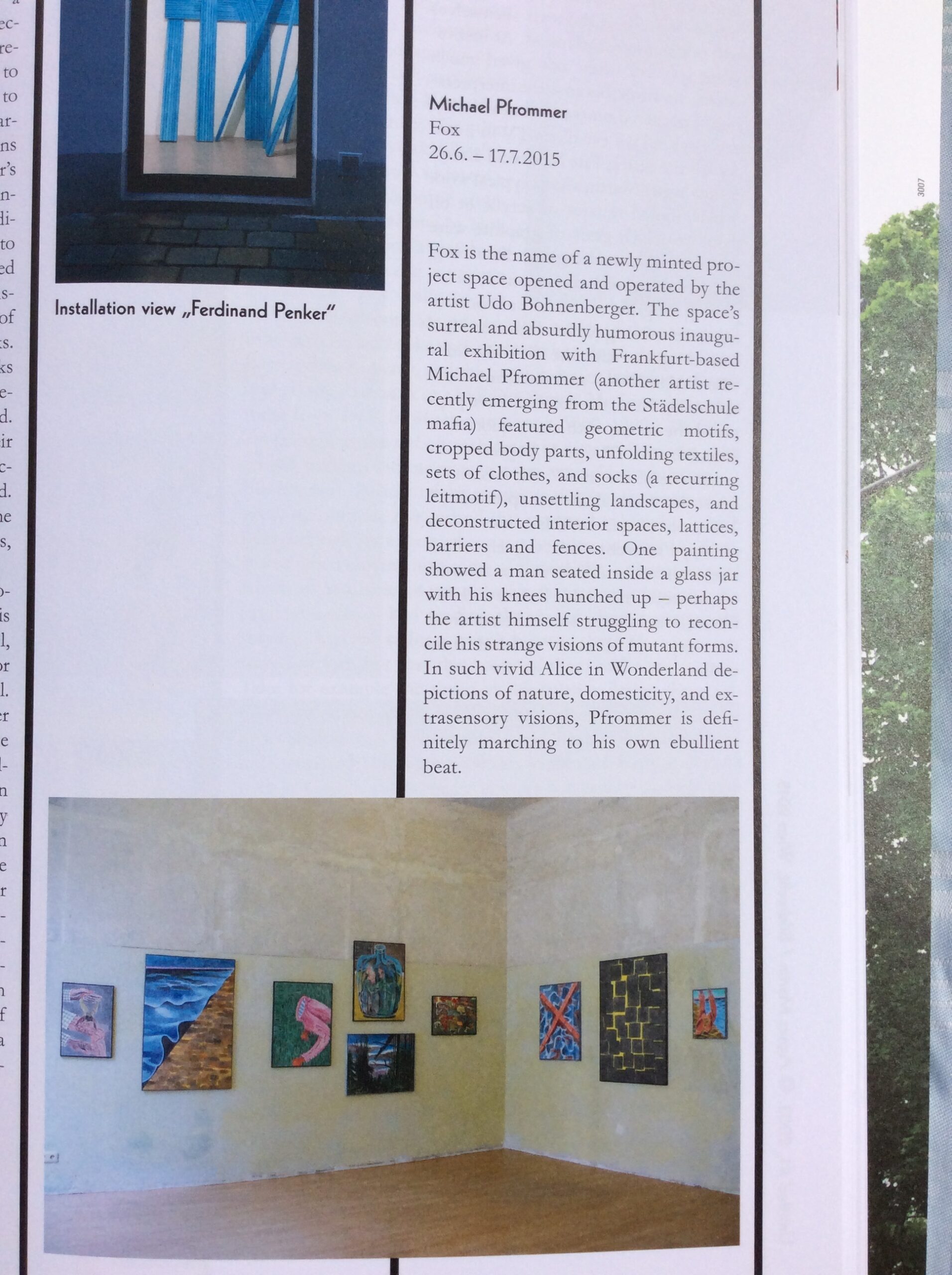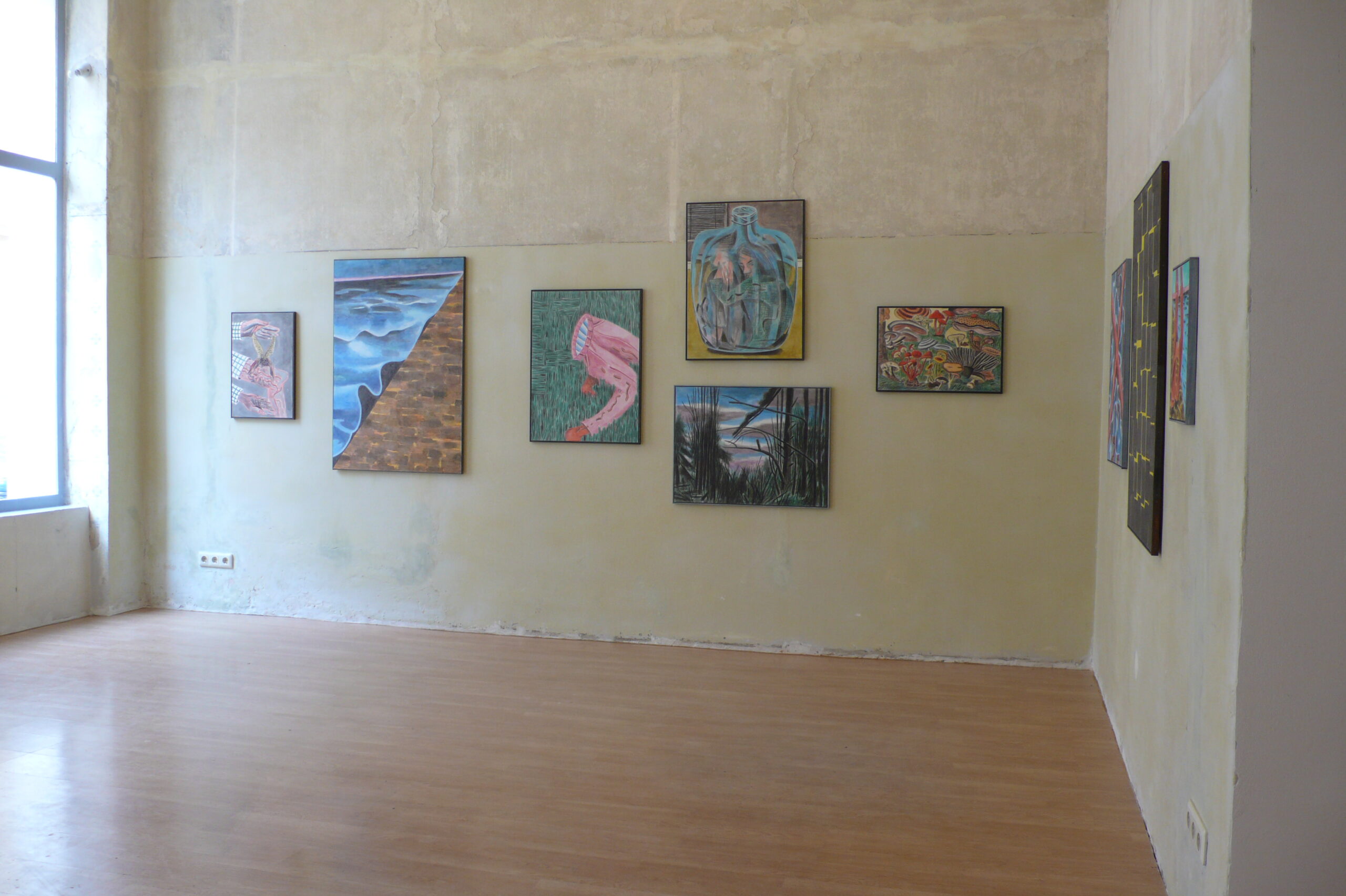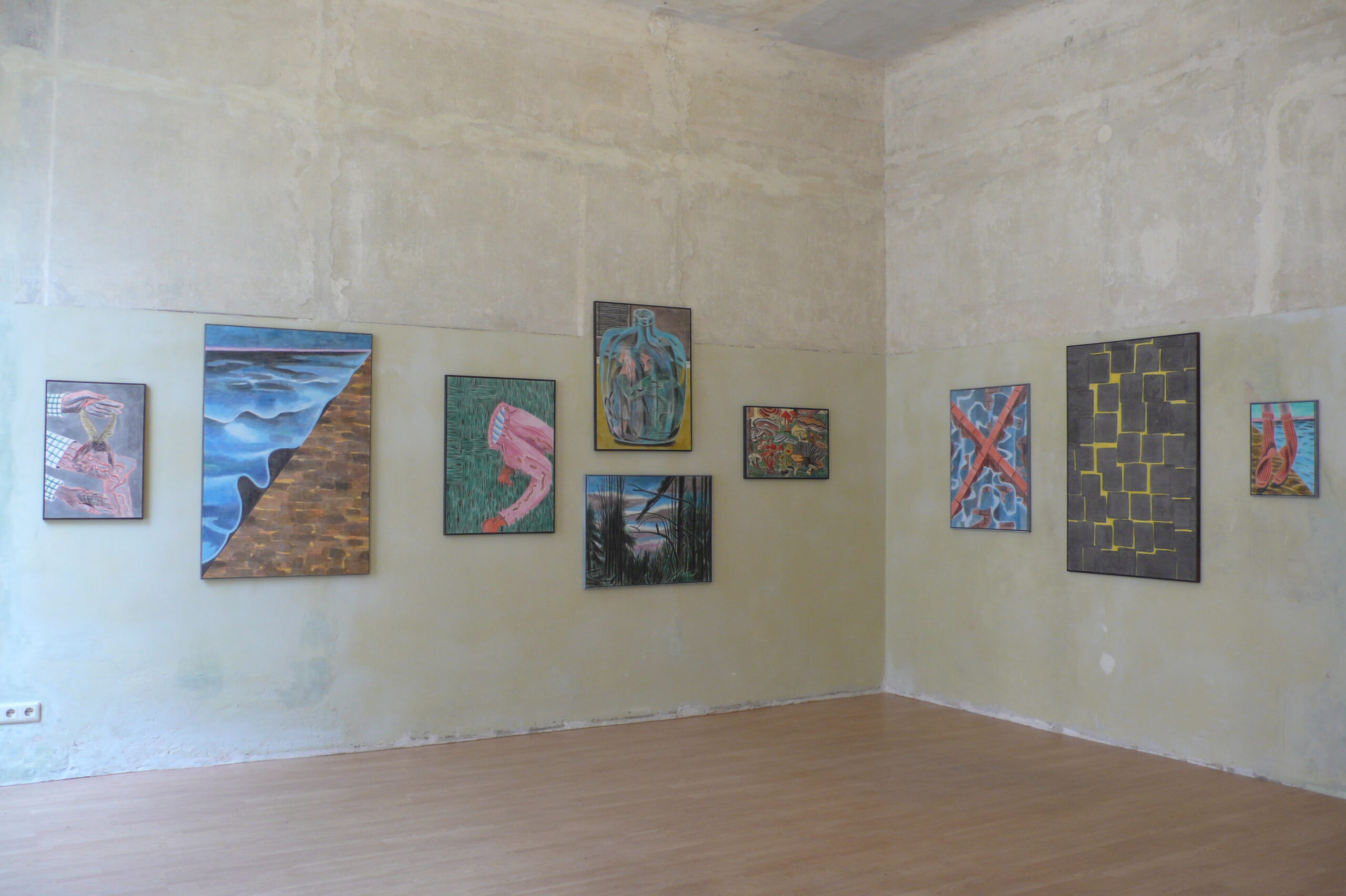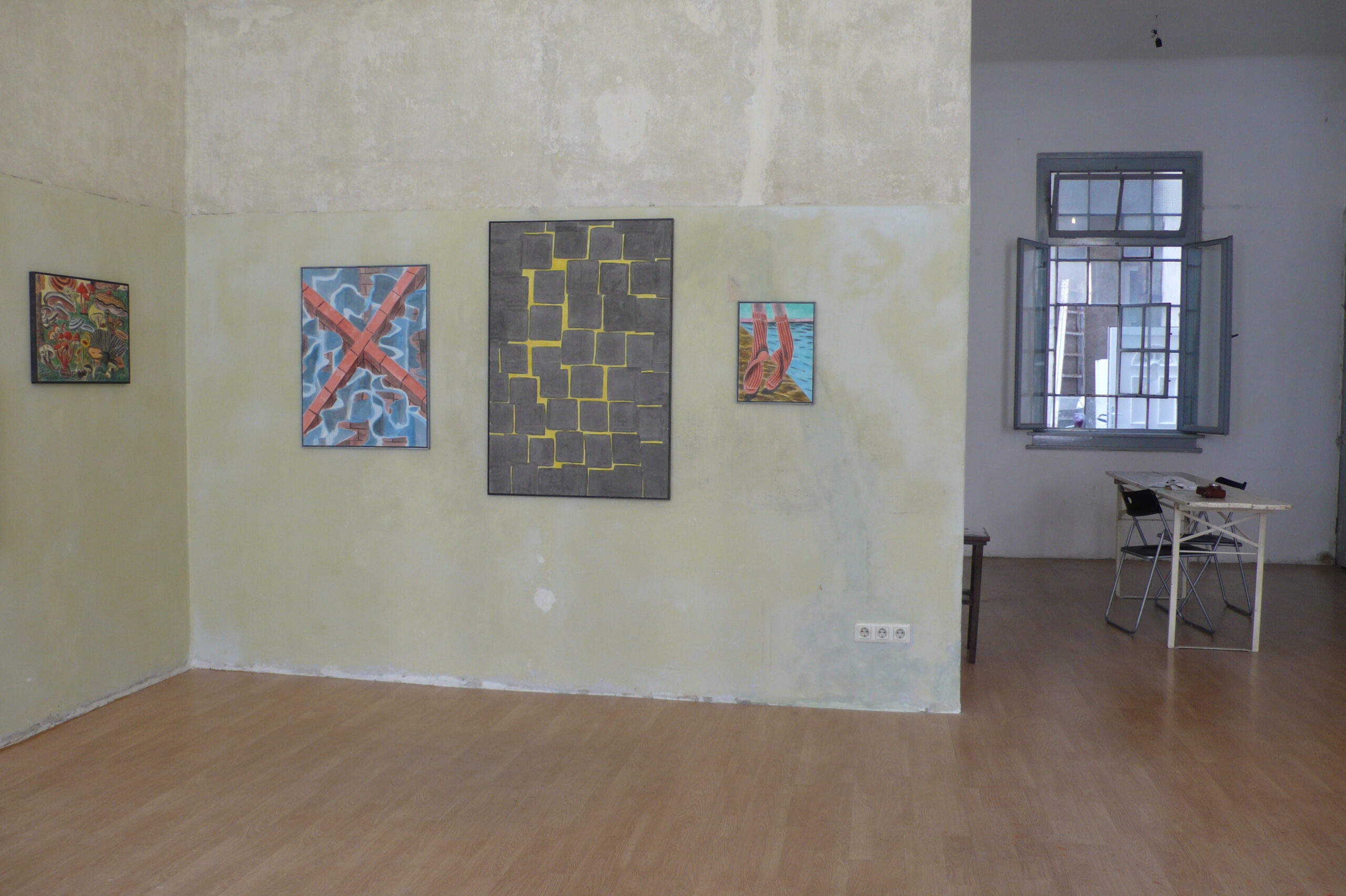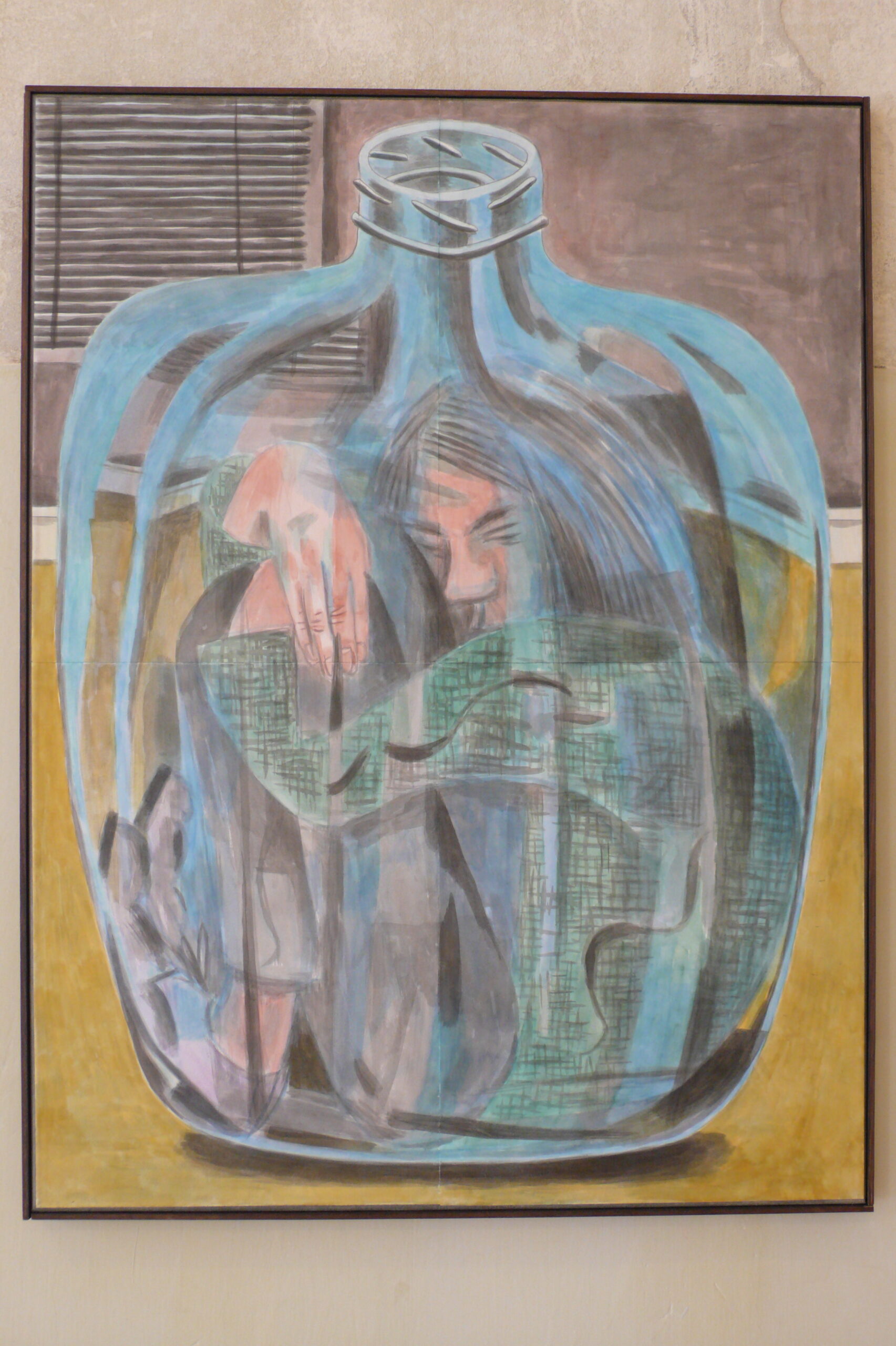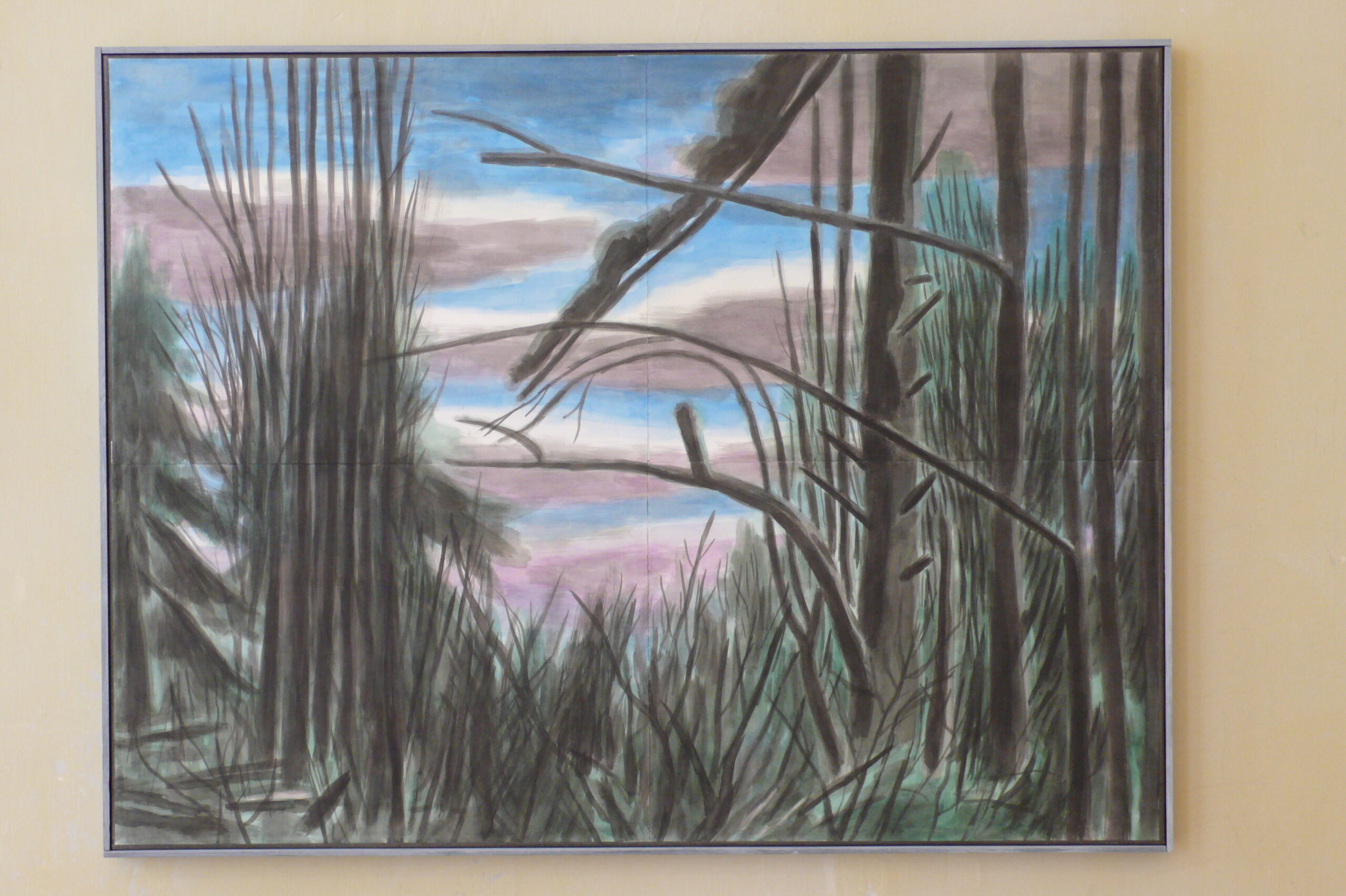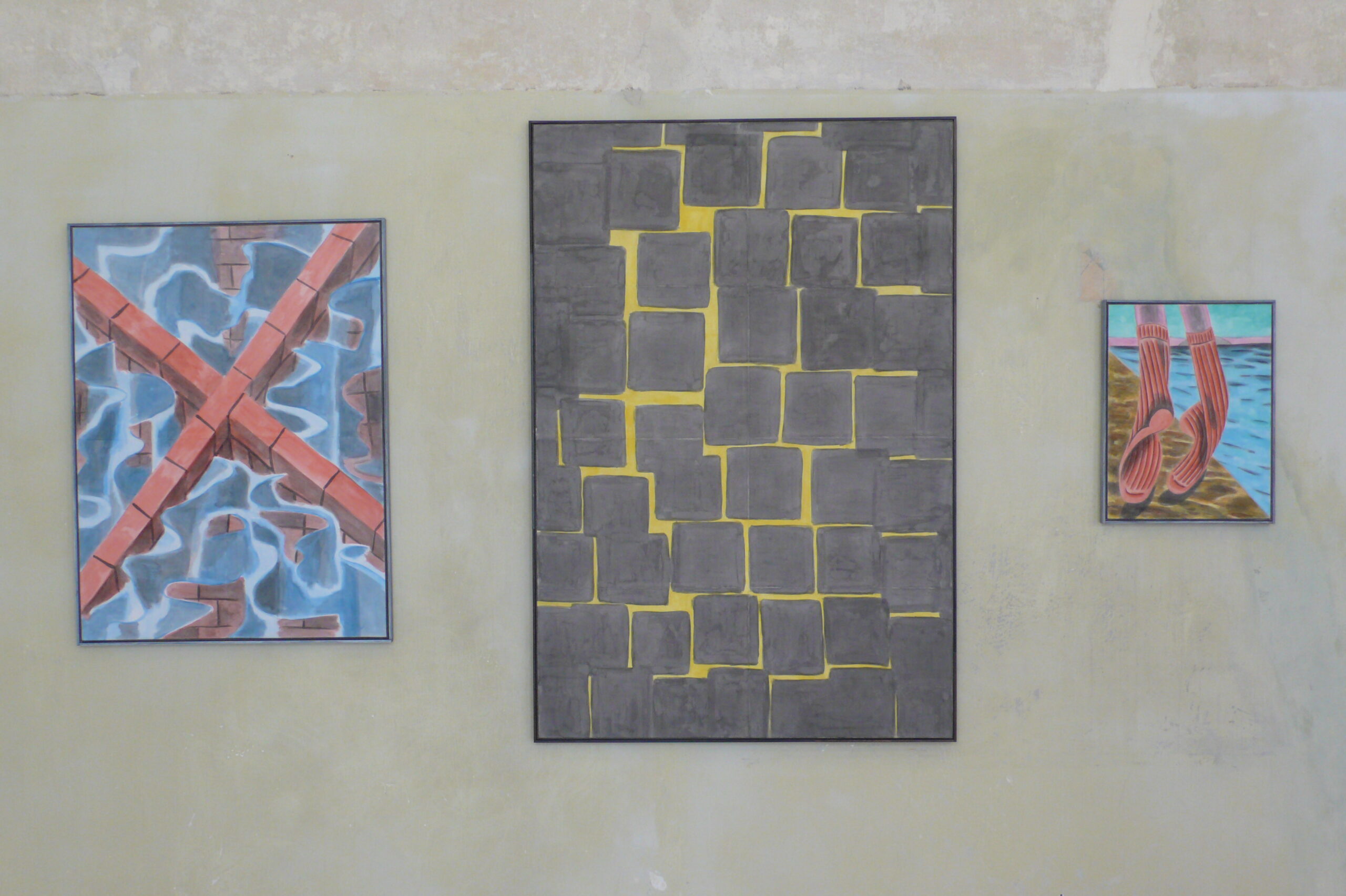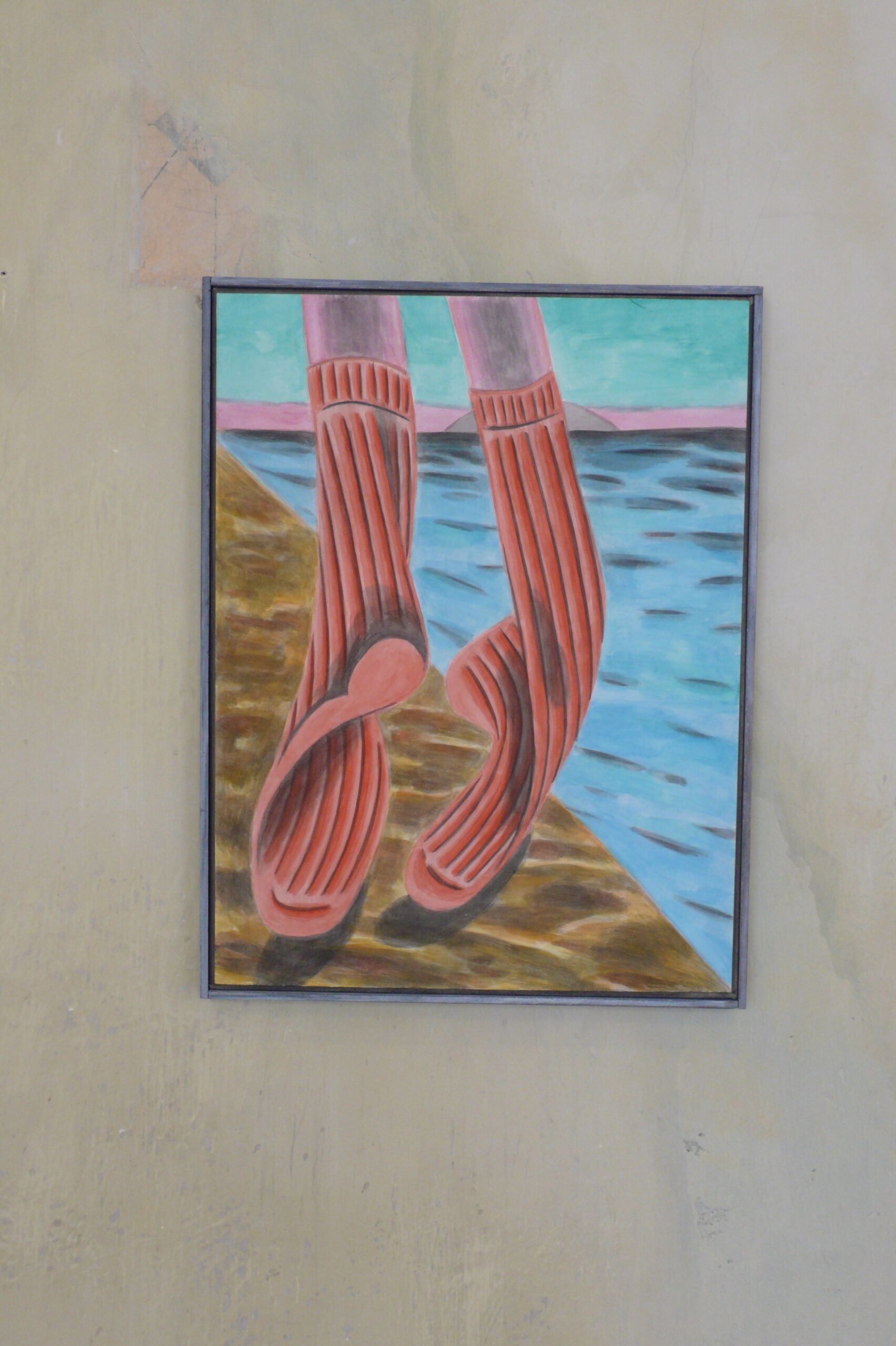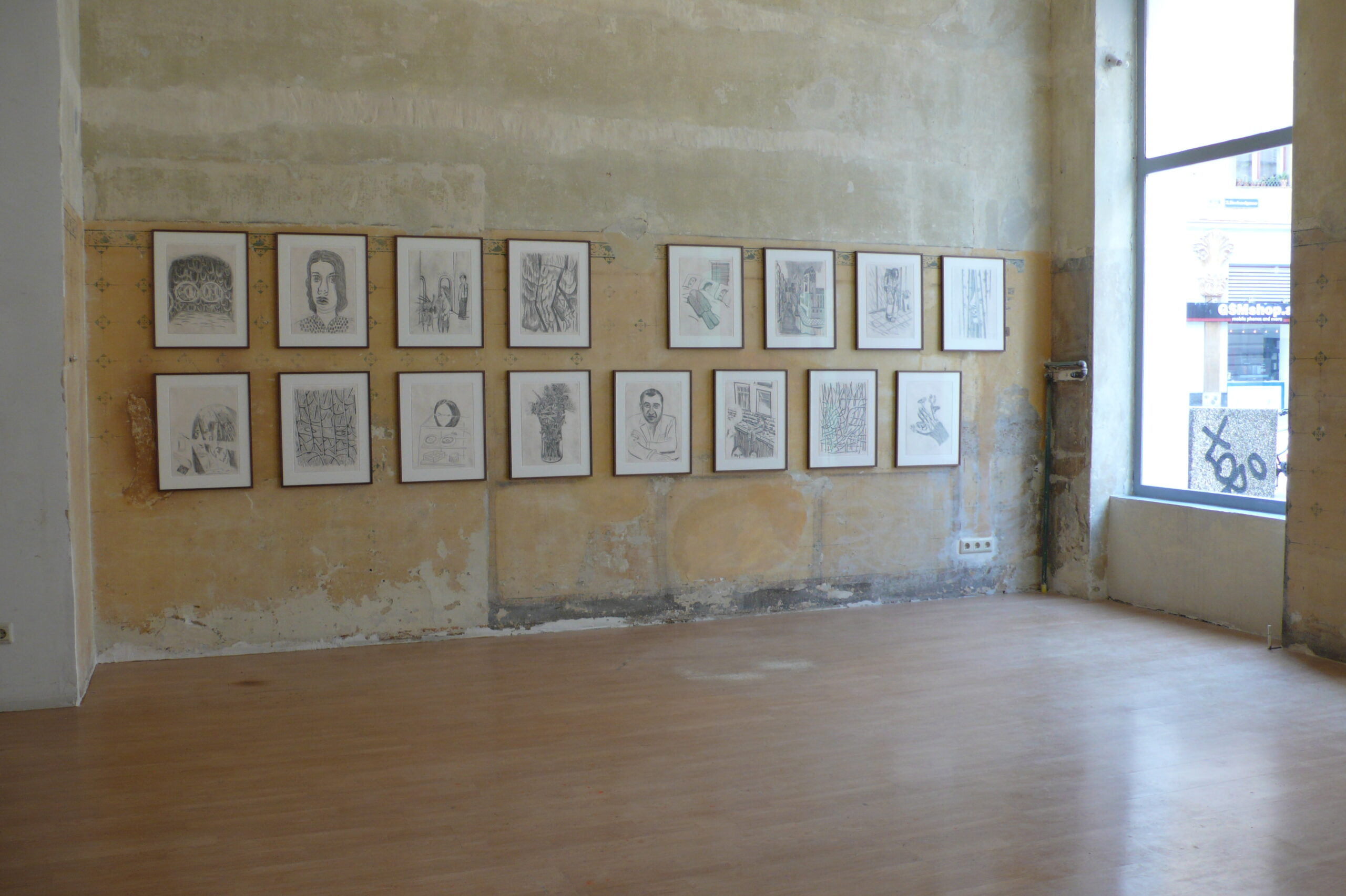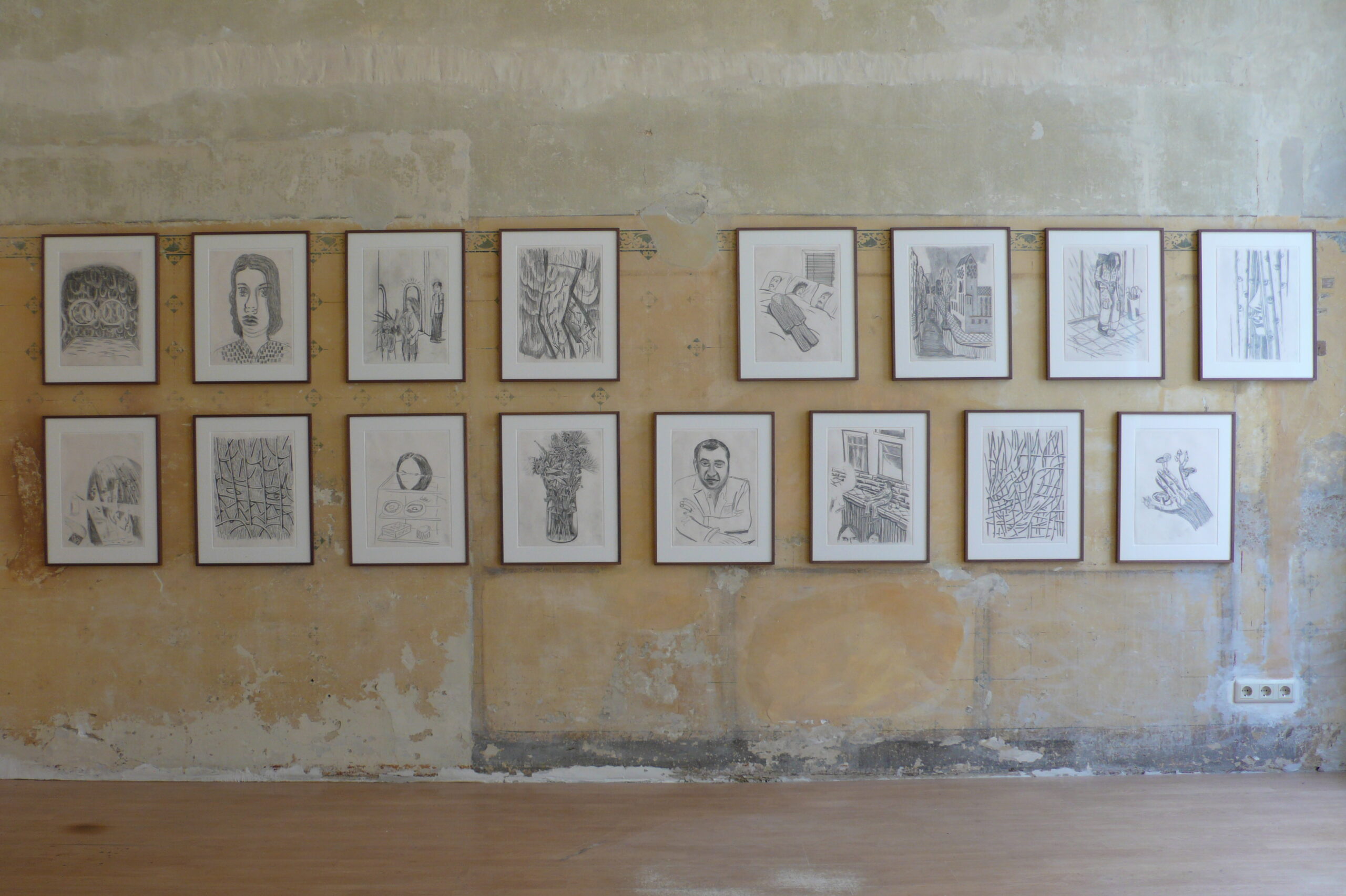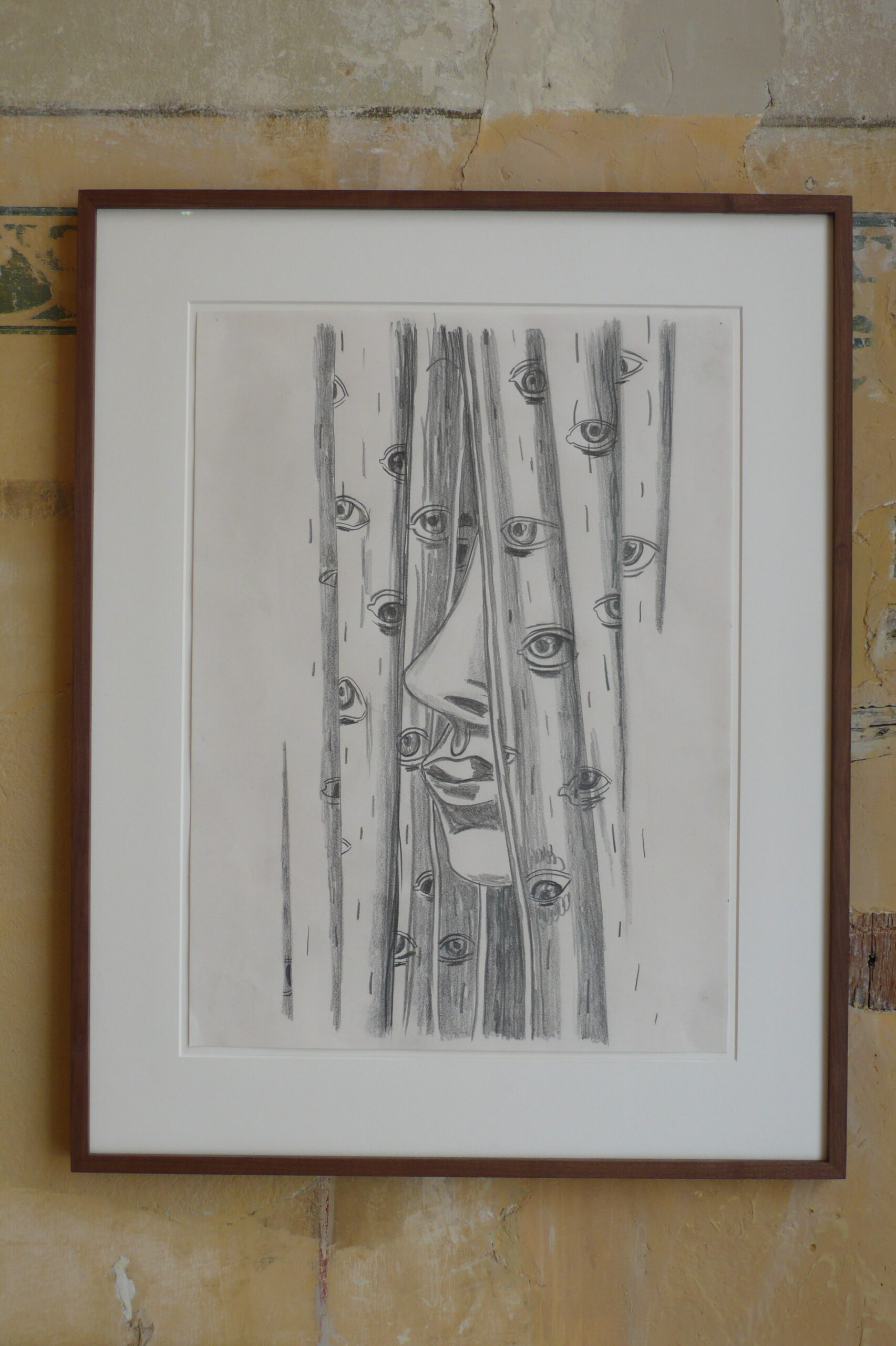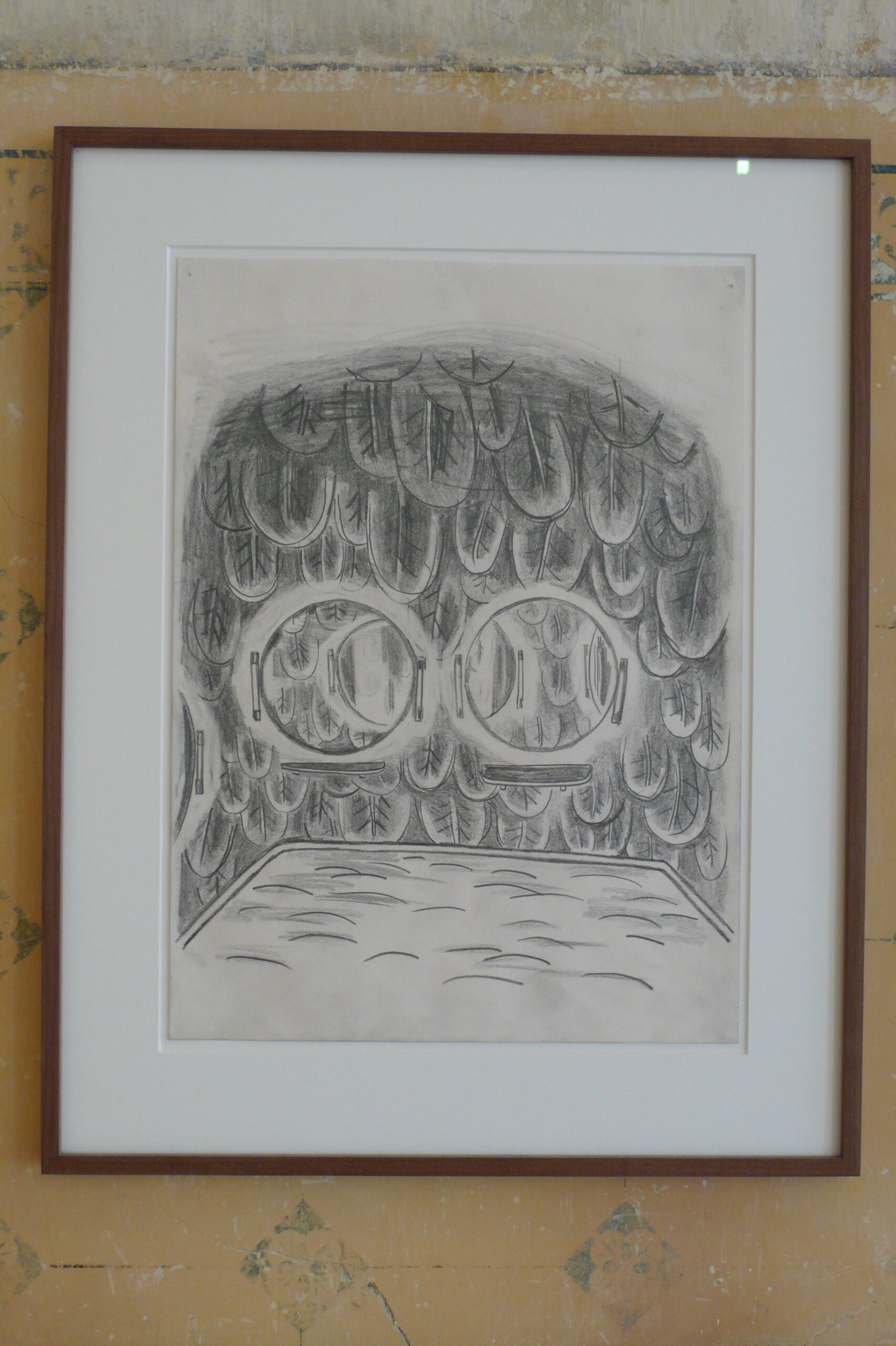Michael Pfrommer
Michael Pfrommer
26.06. bis 17.07. 2015
In Michael Pfrommer’s pictures, one time and again sees articles of clothing that somehow appear to imitate their wearer in that they—hollow within—are able to assume the outer form of a human body. You look, for example, into the empty inner lining of a suit that stands upright before you or is draped carefully and neatly, like a window display, to then, although listless like a discarded friend yet bold like a blithe voyeur, spend the night along with other “real” humans together in bed.
A truly dark fairytale by Hans Christian Andersen from 1847 titled “The Shadow,” tells the story of a traveling man who convinces his shadow to separate from him in order to explore something that the man himself cannot accomplish alone. But the shadow does not return to its master. It is years later, when the shadow, now wearing clothing and of seemingly human flesh and blood, knocks on the door of its former, now ailing master one night and then more than turns the tables through, namely, persuading the learned but trusting man—in return for the gift of a stay at a health resort—to play his shadow in exchange, allegedly only in pretense. In this course of events, the former master, now a pseudo-shadow, becomes more and more dependent on his once subordinate shadow. Until a time comes when no one believes him anymore when he claims to have once been a human being, or indeed to actually still be one. The cruel shadow being, however, who has meanwhile become a king, the result of a trick marriage, declares the good-natured man crazy and even has him publicly executed.
The people that Pfrommer paints and draws are made up of individuals from his private surroundings, who appear in his pictures as variants of a type or a family, as doppelgangers, siblings, shadows, or as hybrids that look similar to one another in various ways. Nevertheless, although there is no hierarchical relationship between them as in the story by Hans Christian Andersen just cited—also because they are all “only” versions— they instead appear not only similar among themselves but seem to have an equivalent value to the objects, landscapes, and architecture in which they meld to become pictorial spaces. Through the painterly use of contrast and sharpness, however, in these pictures the elements of people, things, and nature—which come from different worlds—are placed in a type of formal as well as, quasi, narrative tensioned relationship. Some parts of the pictures are also combined in such a way that they pervade each another like a photographic multiple exposure and might even penetrate into the essence of one another. This happens not only with peaceful intentions as in, for instance, the picture of someone resting on a pillow that, through its pattern, as if it were a sign of mutual understanding, is superimposed over the face of the sleeping woman; but also in such a way, as in the case of the picture of parasitic sponges or fungi that take over a human hand. They really exist, the genus Cordyceps, parasites belonging to the ascomycete fungi, which are able to penetrate not only the body but also the brain of their host to control its actions remotely. Carpenter ants, for instance, are manipulated by this zombie fungus in such a way that they simply carelessly abandon their group of fellow creatures and ultimately, while the parasite then spreads its flesh-like stromata further and further through their bodies, while the ants consequently mutate ever more into fungi, and then die alone. In one of Pfrommer’s works made on a piece of newspaper, such a fungus has arguably made a human hand into its putative proprietor. What at first glance appears to be splayed fingers, possibly one part of a human body lying in the grass that seems quite natural-romantic in the end, proves at second glance to be rather a part of a human being that is slowly but surely becoming another species with an entirely altered outer appearance, and perhaps driven by a new brain or at least a new intention.
It’s not necessary to come at everything with such a criminological approach. Michael Pfrommer told me that he always begins working with objects and people around him in order to simply begin and then to see while working what about them, actually interests him. During this process, the genre and the knowledge of it that we all indeed more or less already possess become part of how the picture develops. Such as: the genre of landscape painting, images of the sea, portraits, and so forth. Then, one simply has to do something again, startover, and then try working in various techniques: drawing, watercolors, gouache, India ink— until the right style for the particular picture is found. In most cases there is only one, very rarely two are equally good for a specific image. What is important is the fact that the individual pictorial elements retain their specific character, their own quality and moreover together, or even better jointly along with the other parts of the picture they become a pictorial space, thus what is called a good picture. I like that and indeed, there are several versions of many pictures, something that I personally would like to read as an alternative to the claim that painting inevitably has more to do with the concept of the original than any other artistic media.
There are also numerous depictions of socks in Pfrommer’s work, some with slightly hairy legs sticking out, some sleepwalking, all of which prove on closer examination to be a type of magic trick—like the virgin who is supposedly sawn in half and thereby exists in two parts, though we are all know that one part of it is just a dummy. The peculiar cast of shadows and the fall of folds on the footwear in these pictures suggest that these empty sock forms are horizontal, perhaps lying on a table, painted or drawn, that were afterward turned at a right angle and then filled with a leg or a prosthesis or simply just fixed to a painted leg.
Michael Pfrommer utilizes another kind of illusive maneuver in his portrayals, in which elements from his others pictorial motifs are somehow zoomed in upon and cut out: structures of floors, tiles, or masonry, that suddenly stand alone rather like an abstract painting, that make one think of a minimalist image or perhaps a meandering, graphic pattern, that draws us in like a maelstrom, as if under the influence of drugs. There are also fences and lattice-like gates on windows or balconies that you look through without knowing immediately what is in front and what is behind, or whether we are still viewers or have already fallen into the story.
What I—maybe intentionally—forgot at the beginning of this text is the fact that the protagonist of “The Shadow,” who first sends it away, was sitting one night at a balcony in the South—it was called an “Altan”1 in 1847—and saw through its latticework a wonderful apparition at a balcony across the way. It is first then that the man, who has become curious, sends his shadow over to that very “Altan” to explore the apartment within, since there didn’t seem to be any access to it from the street. The shadow however, then disappears without reporting anything to him about the apartment or what was in it. It’s not until years later when the shadow returns again that it claims, beyond that other balcony, to have seen and experienced everything. Absolutely everything. He couldn’t tell his former master more. I am convinced that the devious plan of the dark shadow had there already long since begun.
Kerstin Cmelka in April 2014
Diese Ausstellung ist eine Koproduktion mit der Galerie
Philipp Pflug Contemporary / Frankfurt am Main
Öffnungszeiten:
Während der laufenden Ausstellung!
Do u. Sa 17 bis 21 Uhr
oder nach tel. Absprache.
Kontakt:
Marxergasse 16
A-1030 Wien
email: offspace(at)chello.at

